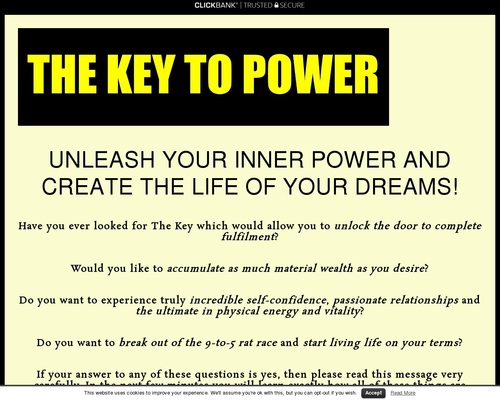
Before we explore what brand voice is all about, take a moment to picture your brand or any brand of your choice. But don’t just imagine it as a business: picture it as a living, breathing entity. See your brand as a person. In the same way people need to look decent, have a good name, and speak with a captivating voice, so too does your brand.
A brand’s voice isn’t just limited to its flamboyant name and dashing logo, but the entire spectrum of words your brand uses while communicating with its clients. Your brand’s voice is the complete embodiment of its personality, and believe it or not; customers can sense the slightest shift in your brand’s voice.
Lately, there’s been so much emphasis on brand logos and names that business owners often forget that customers also pay a great deal of attention to a brand’s voice. Lots of people would be shell-shocked if Apple suddenly changed their calm, simple, and confident nature to embrace Target’s fun and exciting voice.
Your brand’s voice is its nature, its identity, and needs to be carefully considered as you build your brand.
Why Your Brand Needs a Voice
Today, business survival isn’t only dependent on having a great product or offering outstanding services. It’s about creating brilliant marketing strategies, putting your brand out there, and showing the 4.6 billion people on social media what your brand is capable of.
How Top Brands Speak
Every brand has a voice, regardless of whether they choose to, and it can either be authentic or weak. These brands have built their voice so much that if they were human, here’s what they’ll tell you:
- Apple: Think different
- Nike: Just do it
- Dove: Put your best face forward with Dove
- Liquid Web: Most Helpful Humans in Hosting
- Coca-Cola: Taste the feeling
- Amazon: Work hard. Have fun. Make history.
The first step to seizing and maximizing every opportunity and growing your brand’s voice is by getting an awesome name, and the best place to start is with a business name generator. It’ll help you generate countless brand names in a few seconds.

Building and Maintaining Your Brand Voice Across Several Channels
Now that you understand what a brand voice is and why you need one, let’s explore some quick steps that can help you create your voice and maintain that voice in all your platforms. This is where your branding team plays a major role.
1. Know Your Audience
Having a complete understanding of your audience is the first step to building your brand voice. Understand who your target audience is, their preferences, and how they communicate. Take note and learn whether your service is well suited for groups such as:
- Millennials or baby boomers
- Large companies or small startups
- Young singles or married couples
Next, study the psychographic and demographic data of your audience, as this will help your content creators write content that better resonates with them.
2. Create a Short Description
Get your branding team and key members of your business to take a long look at all your previous content and learn which pages got more reader interest. Find out the page’s tone and which personality it communicates because that’s the one your customers have connected with.
You can further simplify this personality so you can see exactly how your future content should sound like. Think of the mood that the words invoke.
Here’s examples from popular brands:
- Authentic: Trustworthy, Direct, and Confident. E.g., Apple
- Passionate: Expressive, Excited, Fun, Action-Minded. E.g., Liquid Web
- Friendly: Happiness, Experience, Joy. E.g., Coca-Cola
You’re not in a competition when it comes to finding your brand’s voice, so there’s no need to copy or sound like your competitors.
Create a Brand Voice Chart
Using the brief descriptions above, you can build a chart similar to the one below. It’ll help you know what direction to take when defining the voice of your brand.
Creating a brand voice chart simplifies the processes involved in establishing a brand voice, and it’ll make it a lot easier for your content creators to maintain one standard across several platforms. When it comes to branding, consistency is key.

Source: Marketects
Write Uniformly
Your content team needs to work with clear guidelines that reflect your brand’s voice. It also helps if you set the standards by creating a bunch of content that reflects your brand personality for several situations and platforms. This would help ensure your voice is uniform across these platforms.
Constantly Review
Don’t make the mistake of abandoning your brand voice. As time goes by and the market changes, take the time to review your voice chart and alter any brand description that hasn’t worked well over time. Over time, your audience will show you what brand voice is compelling and true for your brand.
Two Things That Makes a Brand Voice Compelling
In executing an effective marketing strategy, you need a brand voice that speaks to your target audience and captures your business’s mission and values.
Here are some things that make a brand’s voice sweet to the customer’s ears.
1. Having a Solid Brand Personality Tailored To A Specific Audience
Having a great personality makes a brand’s voice compelling to its target audience, and the easiest way to choose your brand personality is to understand the personalities of your target audience and pick a personality that matches theirs.
A brand hoping to target Millennials would need to have a confident, tech-savvy, and goal-oriented personality.
Your brand must stay true to its personality while it adapts to changing times. Remember, your brand should maintain a constant brand message. Don’t alter based on brand giants or your competitors.
2. Understanding Brand Tones
Content creation is one primary way a brand speaks, and some of the best ways customers get to hear that voice is through:
- Blogs and web content
- Social media content
- Emails
How your message sounds is a lot more important to the customer than what you’re saying.
The best way to reach your customers and grow your business is to set the tone for your brand and communicate emotionally.
You’ll want to make sure that, depending on the niche, your brand’s message is communicated to your customers in either a pragmatic, classic, modern, playful, or emotional tone.
Know that whatever tone you choose must fit your brand’s voice.
Selecting a Brand Tone
One of the best ways your marketing team can set your brand for success is to carefully select the best tone that’s consistent with your brand’s personality. To do this effectively, you must know why customers are excited about your brand.
Understand that a brand’s tone isn’t the same as a brand’s voice. For one, a brand tone can change depending on the message being communicated. A brand’s voice cannot, and should not, change based on message.
Share Your Brand Voice With Everyone
Communicate the voice of your brand across all channels by sharing your brand voice guidelines with all employees across the business. This is a crucial step, as customers will notice if the voice is uniform across the sales team in chats and phone calls, but not when they talk with billing or support.
Ensure all customer-facing teams are aware of brand voice and values.
With all teams in alignment with how your brand is perceived, your customers will enjoy your brand voice across any team they interact with.
Learn 4 Ways to Name Your Business to Generate Success
[ad_2]
Source link






